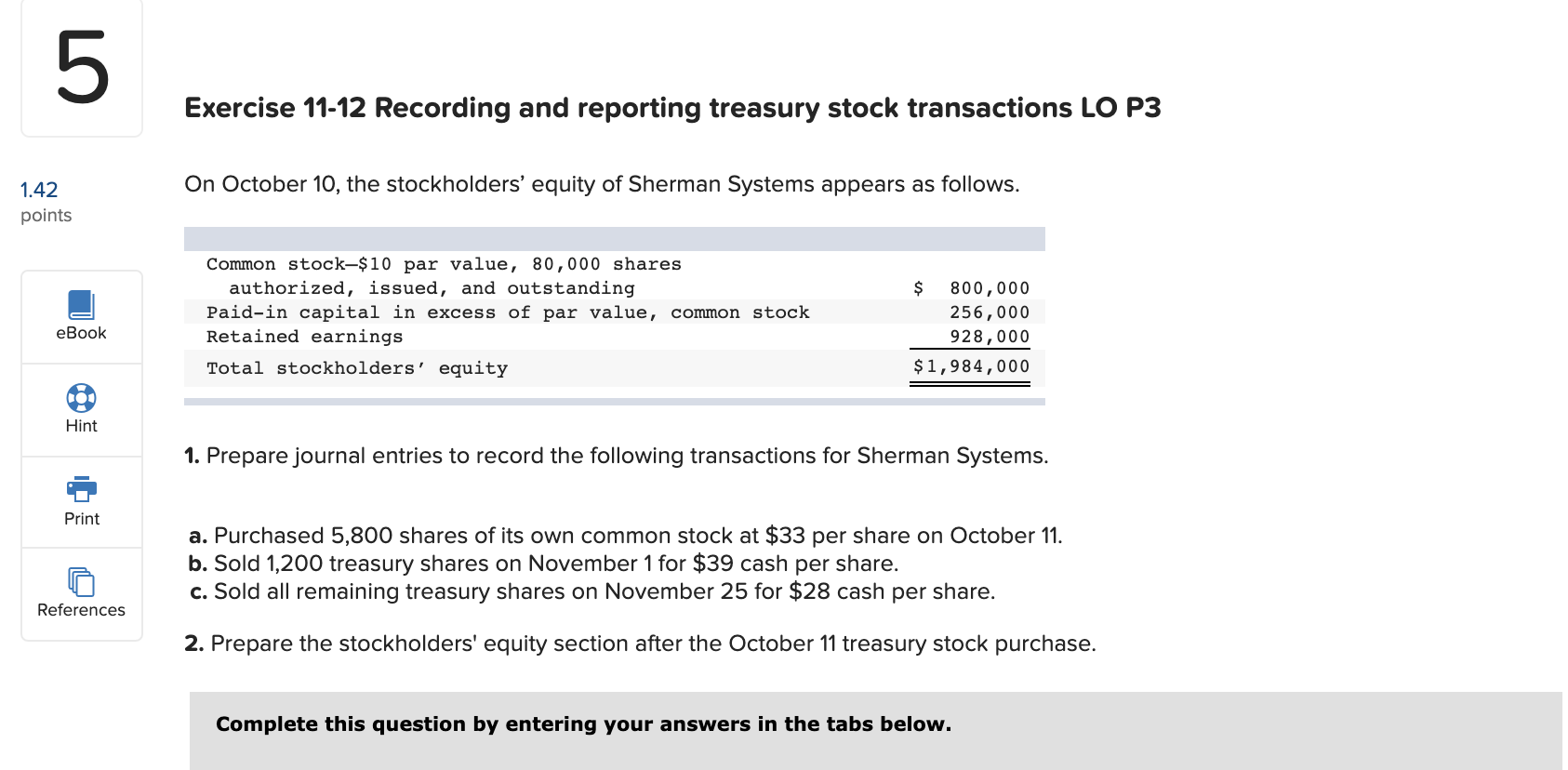Journal Entry For Retiring Treasury Stock - (3) reduce the shares outstanding and thereby increase earnings per share; However, that does not concern the accounting for the issuance of treasury stock. Web treasury stock journal entry. Web in some cases, companies may also retire the stock. Since the company is repurchasing common stock from the public, that represents treasury stock. Record the entire amount of the purchase in the treasury stock account. A company can either use the cost method or the par method to record treasury stock: Test your knowledge with multiple choice flashcards. What are the journal entries for the issuance of treasury stock? This resource promises to provide invaluable insight into this key financial concept and bring your knowledge of.
PPT Corporations Effects on Retained Earnings and the
Web if the board were to resell the shares at a price of $13 per share, the entry would be: A company can either use.
Treasury Stock Journal Entries YouTube
A company can either use the cost method or the par method to record treasury stock: Let’s list and explain them below: In each case.
PPT Corporations Effects on Retained Earnings and the
(2) reissue the stock later at a higher price; Since the company is repurchasing common stock from the public, that represents treasury stock. Alternatively, the.
Issuing Stock & Treasury Stock (Journal Entries) YouTube
Retirement of common stock without recording the treasury stock. Web if the board were to resell the shares at a price of $13 per share,.
Journalizing Treasury Stock Transactions (Cost Method) YouTube
Web updated on april 29, 2023. Let us understand the journal entries in a case when the entity decides not to issue back these shares.
PPT Corporations Effects on Retained Earnings and the
Let us understand the journal entries in a case when the entity decides not to issue back these shares and instead retire them permanently. (2).
View 27 Treasury Stock Journal Entry greatsomethingstock
Web the financial accounting perspective: Web treasury stock (treasury shares) are the portion of shares that a company keeps in its own treasury. Or (4).
Problem 132A Treasury Stock Journal Entries (part a) YouTube
The cost method is the most used method to account for the repurchase of shares. What are the journal entries for the issuance of treasury.
Treasury Stock Journal Entries Exercise YouTube
Record the entire amount of the purchase in the treasury stock account. Retirement of common stock without recording the treasury stock. In each case the.
Reacquiring Shares Decreases The Number Of Outstanding Shares In The Market.
A company can either use the cost method or the par method to record treasury stock: What is the journal entry to record treasury stock under the par method? Web a corporation may reacquire its own capital stock as treasury stock to: Company a reacquired 100,000 shares at a price of $24.00.
Web The Journal Entries To Record The Issuance Of This Common Stock Would Be As Follows:
Web the treasury stock cost method journal entries below act as a quick reference, and set out the most commonly encountered situations when dealing with the double entry posting of treasury stock using the cost method. If it were to do so, the entry would be: A corporation may also purchase its own stock and retire it. Test your knowledge with multiple choice flashcards.
(3) Reduce The Shares Outstanding And Thereby Increase Earnings Per Share;
(1) cancel and retire the stock; The journal entries for the issuance of treasury stock will differ based on the method used to record them initially. The par value method is based on the assumption that the acquisition of treasury stock is essentially a permanent reduction in stockholders' equity. Alternatively, the board may elect to retire the shares.
The Journal Entry To Record This Transaction Using The Par Method Would Be As Follows:
(3) reduce the shares outstanding and thereby increase earnings per share; Retired stock reduces the number of shares issued. Since the company is repurchasing common stock from the public, that represents treasury stock. Or (4) issue the stock to employees.









